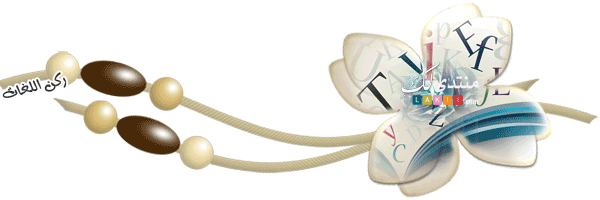

Hajj
Once a year, Muslims of every ethnic group, colour, social status, and culture gather together in Mecca and stand before the Kaaba praising Allah together.
It is a ritual that is designed to promote the bonds of Islamic brotherhood and sisterhood by showing that everyone is equal in the eyes of Allah.
The Hajj makes Muslims feel real importance of life here on earth, and the afterlife, by stripping away all markers of social status, wealth, and pride. In the Hajj all are truly equal.
The Hajjis or pilgrims wear simple white clothes called Ihram. During the Hajj the Pilgrims perform acts of worship and they renew their sense of purpose in the world.
Mecca is a place that is holy to all Muslims. It is so holy that no non-Muslim is allowed to enter.

History of the Hajj
Four thousand years ago the valley of Mecca was a dry and uninhabited place.
Muslims believe the Prophet Ibrahim (Abraham) was instructed to bring his wife, Hajira (Hagar) and their child Is’mail to Arabia from Palestine to protect them from the jealousy of Ibrahim’s first wife Sarah.
Allah told the Prophet Ibrahim to leave them on their own, and he did so, with some supplies of food and water. However the supplies quickly ran out and within a few days Hajira and Is’mail were suffering from hunger and dehydration.
In her desperation Hajira ran up and down two hills called Safa and Marwa trying to see if she could spot any help in the distance. Finally she collapsed beside Is’mail and prayed to Allah for deliverance.
Is’mail struck his foot on the ground and this caused a spring of water to gush forth from the earth. Hajira and Is’mail were saved. Now they had a secure water supply they were able to trade water with passing nomads for food and supplies.
After a while the Prophet Ibrahim returned from Palestine to check on his family and was amazed to see them running a profitable well.
The Prophet Ibrahim was told by Allah to build a shrine dedicated to him. Ibrahim and Is’mail constructed a small stone structure – the Kaaba or Cube – which was to be the gathering place for all who wished to strengthen their faith in Allah.
As the years passed Is’mail was blessed with Prophethood and he gave the nomads of the desert the message of surrender to Allah.
After many centuries, Mecca became a thriving city thanks to its reliable water source, the well of Zam Zam.
Gradually, the people began to adopt polytheistic ideas, and worship spirits and many different gods. The shrine of the Prophet Ibrahim was used to store idols.
After many years, Allah told the Prophet Muhammed that he should restore the Kaaba to the worship of Allah only.
In the year 628 the Prophet Muhammed set out on a journey with 1400 of his followers. This was the first pilgrimage in Islam, and would re-establish the religious traditions of the Prophet Ibrahim.

Guide to going to Mecca
Guide to going to Mecca
 Pilgrim with his belongings ©
Pilgrim with his belongings ©
It’s best to travel light, so only take essentials.
Many pilgrims fly to Jeddah, and then travel to Mecca by bus.
Once you get to Mecca, there are two rituals which you can perform; the lesser pilgrimage or Umra, and the main pilgrimage or Hajj.
The Umra is an extra, optional pilgrimage and does not count as the once-in-a-lifetime Hajj. Although it includes some of the rituals of the Hajj, they are shortened and there are fewer of them.
Most pilgrims who come for the Hajj arrive a few days before it actually starts and perform Umra first. Combining the Hajj with the Umrah is called a Hajji-Tamattu.
Being pure
To carry out the pilgrimage rituals you need to be in a state of Ihram, which is a special state of ritual purity.
You do this by making a statement of intention, wearing special white clothes (which are also called ihram) and obeying the regulations below.
The person on the Hajj may not:
- Engage in marital relations
- Shave or cut their nails
- Use cologne or scented oils
- Kill or hunt anything
- Fight or argue.
- Women must not cover their faces, even if they would do so in their home country.
- Men may not wear clothes with stitching.
- Bathing is allowed but scented soaps are frowned upon.
Umra
The Hajj is a real pilgrimage – a journey, with rites and rituals to be done along the way.
You begin at a place just outside Mecca called the Miqat, or entry station to the Hajj.
There you bathe, put on the Ihram (the special white clothes), make the intention for Umra and begin reciting the Talbiya Du’a (prayer).
Talbiya Du’a
Then you go to the Masjid al Haram and walk around the Ka’ba seven times repeating du’as and prayers. This is called the Tawaf. Afterwards you should sip some Zam Zam water.
Zam Zam water is water from the Zam Zam well, the sacred well which opened in the desert to save Hajira and Is’mail from dying of thirst.
Next you go to the walkway between the hills of Safa and Marwa and walk back and forth between them seven times.
This completes the Umra portion of the Hajj rituals and some of the Ihram restrictions are relaxed.
Hajj
Now make your intention for the Hajj and put on the Ihram garments again.
Travel to Mina on the 8th of Dhul Hijjah (a date in the Islamic calendar) and remain there until Fajr (dawn) next morning.
Then you travel to the valley of Arafat and stand in the open praising Allah. The heat of Arabia at midday provides a hint as to what the Day of Judgement will be like.
At the end of the day, travel to Muzdalifa for the night. Gather together 49 or 70 small stones together to use the next day.
In the morning you return to Mina and throw the stones at pillars called Jamraat. These represent the devil. Then a sacrifice called a Qurbani should be made in which a lamb or sheep is slaughtered and the meat distributed among the poor. After this, men’s heads are shaved and women cut a lock of their hair.
Then return to Mecca and make a Tawaf (this is the ritual of walking around the Ka’aba seven times). Then it’s back to Mina for 3 or 4 days, stoning the pillars each day.
Finally do a farewell Tawaf in Masjid-al Haram on the twelfth day of the month of Dhul Hijjah, ask Allah’s forgiveness, make du’a and the Hajj is finished.
Many people then go to the Prophet’s Mosque in Medina, but this is optional.
A man who has completed the Hajj is called a Hajji, a woman who has completed it is called a Hajjah.
At the end of the Hajj, Muslims from all over the world celebrate the holiday known as the Eid ul Adha or Festival of the sacrifice.
This festival commemorates the obedience of the Prophet Ibrahim when he was ordered to sacrifice his son Is’mail.
Ibrahim proved his love and devotion to Allah by showing his willingness to kill his beloved son if Allah wished it. In the end Ibrahim did not have to kill his son as Allah gave him a ram to sacrifice instead.
 One of the pillars of Jamraat ©
One of the pillars of Jamraat ©

FROM BBC RELIGIONS


اللهم بلغنا وكل أحبتنا ذلك المقام وإجعلنا من المغفور لهم إن شاء الله..
موضوع مهم جداا غاليتي ام ابراهيم
بارك الله فيك و نفع بك
May Allah bless you my sister
Very important information
فعلااا مهمة في الوقت الحالي
اللهم بلغناااا مقامك الحبيب ))
خصوصا و اننا بموسم الحج
بارك الله فيكي غاليتي و نفع بك
thanks a lot dear Om Barhoom
may Allah bless you
♥
الله يكتب الأجر للجميع
((